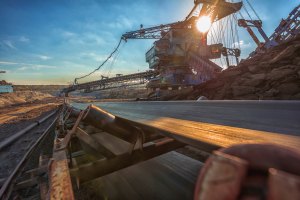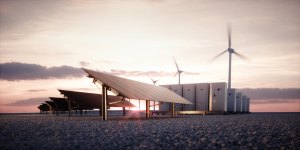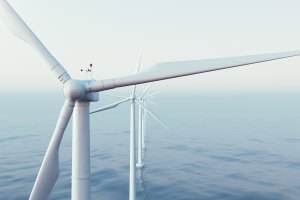
BY DAVID QUINCEY
Replacing the gap in Australia’s energy matrix is a challenge which will be left by the demise of coal-fired power stations, so what next?
Renewable resources are an essential part of Australia’s power generation mix, but unless we start seriously investing in greater renewable infrastructure, they will never replace the base source of our energy generation – coal-fired power stations. Currently, wind and solar generation provide approximately just 10 per cent of electricity in Australia, with brown coal, black coal and gas the predominant source of our national power generation.
In order to meet our Paris Agreement obligations, Australia needs to decommission its coal-fired power stations by around 2030 (Parliamentary Business, Senate committee report). At WT, we are involved in the decommissioning of some of these large traditional power plants, by costing the decommissioning, demolition and rehabilitation of these facilities to be reusable ‘greenfield’ sites. Concerningly, most of these stations will be at the end of their economic and technical lives before 2040, yet there is no holistic plan to replace the 80 to 90 per cent of the generating capacity that coal currently provides.
The strain on our power grids is only going to increase as Australia’s population continues to grow, especially in our major cities. The large energy requirements of desalination plants (which are needed to mitigate our drying environmental conditions) and the investments being made in the uptake of electric vehicles will only increase demand. Industries have already taken the low hanging fruit in energy efficiencies, building regulations are tightening and clients are pushing for higher Green Star and NABERS ratings. But whilst these are positive contributions to a renewable future, we urgently need to be looking at the bigger picture – how will we be powering our country in twenty years’ time?

The construction of more solar and wind generation is essential to start bridging that gap, and WT has played a part in many of these schemes. However, the key issue with this energy source is that it cannot provide dispatchable power. Unlike traditional thermal power stations, energy from solar and wind can only be generated when the sun shines or the wind blows. Hydroelectrical power or pumped hydro power – another form of renewable energy – can provide dispatchable power, but the supply of this resource in Australia is extremely limited by geography and topology.
One solution often promoted as helping to smooth out the intermittent nature of these renewable resources is mega-battery storage systems. Examples include the Hornsdale Power Reserve in South Australia made famous by Elon Musk and the recent announcement of AGL’s $120m battery storage system in Queensland. Solar and wind generation does introduce a lot of frequency instability to the grid, and mega-batteries are invaluable as a solution to this issue by storing electricity generated and dispensing it almost instantly when the grid ‘spikes’. However, these battery storage systems are far from the complete solution. As a source of bulk power, the technology just isn’t there yet. For example, AGL’s mega-battery facility will have a capacity of 150 megawatt hours of stored power – that total maximum theoretical capacity would power the NSW grid for less than one minute. These batteries may help stabilise our grid, but fundamentally, we just don’t have enough renewable infrastructure on our hands to meet the demands of Australia’s current power usage. Building more wind and solar farms is part of the solution, but they cannot be the base source of power for our country alone. We must take a holistic look at alternative solutions to supplement wind and solar power if we have any chance of replacing the generating capacity of our coal-fired power stations.

So, what alternatives could suit the Australian climate? Natural gas-fired stations are a great source of dispatchable power, with the Federal government recently announcing that it will underwrite two gas-fired power stations in Victoria and Queensland. Whilst still a form of fossil fuel, gas-fired stations are far less polluting than coal, producing nearly half as much carbon dioxide per unit of energy. However, investment versus efficiency has to be weighed up when considering what type of facilities to build. Open-cycle gas-fired generators are relatively cheap and quick to build yet are only around 40 per cent efficient. This can be compared to closed-cycle gas fired-stations, which are up to 60 per cent efficient, but are also more expensive to construct and operate and need significant water supplies, which makes them a less attractive investment.
Whilst controversial, nuclear power could also be a viable solution, and should be part of the discussion. For example, companies such as Rolls Royce are developing prefabricated modular ‘mini-nuclear’ power stations, which are much smaller in size and output than current-day nuclear stations. These would essentially arrive in sections on the backs of trucks, be assembled on-site and switched on. There are safety and security concerns to be addressed, but could that be part of a solution? Can we afford to simply ignore it?

And of course, we must pour research and development efforts into improving the performance of our existing renewable technologies. Increasing the efficiency of solar panels, developing a new battery technology or producing an efficient, cheap hydrogen power cell could change the picture overnight. However, we can’t bet our future energy security on a possible breakthrough somewhere down the track – we simply don’t have the time. Our government needs to be evaluating our current options and taking immediate action.
Countries around the world are making huge advancements in renewable energy production, and Australia urgently needs to follow suit. Scotland, for example, is officially on track to run on 100 per cent renewable energy by the end of 2020, employing a diverse energy matrix mix made up wind, solar, geothermal, hydroelectric, and hydrokinetic power. As the renewable energy market becomes more competitive, prices are also being driven down. India has just secured the world’s largest solar and storage tender, locking in the some of the world’s cheapest prices for solar energy and storage. With this move, thermal coal power in India has become priced out, meaning the country will likely look to reduce coal imports from countries such as Australia as it transitions to a renewable-based energy sector.
The nail is clearly being driven into the coffin of coal. Why then does our government appear so desperate to hang onto this outdated and unviable energy source and not accept the reality of its imminent demise? Politicians are pointing at the market to provide the solution, whilst investors are waiting for any sign of certainty in the shifting sands of policy decision making, which is dictated by our three-year cycle of elections. In ten years from now, we could be facing a significant shortfall in generation vs demand, and power stations traditionally take years to get from concept to operation. Nobody seems willing to make the hard decisions, or even it seems to have the hard conversation. We need action now.


